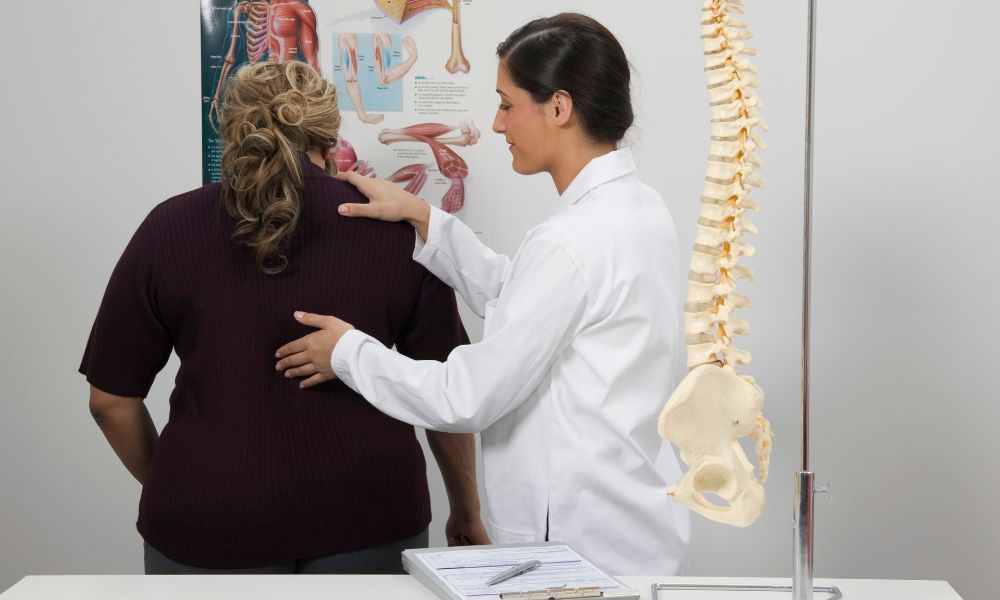Sedentary lifestyles and protracted sitting have been linked to a number of health issues, including obesity, cardiovascular disease, and musculoskeletal disorders. As a result, standing workstations have grown in popularity as a remedy for these issues.
However, many individuals question whether chiropractors recommend standing desks to promote health and prevent musculoskeletal disorders. In this exhaustive guide, we will investigate this question in depth.
What is The Job Of a Chiropractor?
A Chiropractor oversees diagnosis, treatment, and prevention of musculoskeletal disorders, especially those associated with the spine. To restore joint function and mitigate pain, chiropractors utilise numerous techniques, including spinal manipulation. People who experience back pain, neck pain, migraines, and other musculoskeletal issues frequently seek chiropractic care.
Standing Desks: Do Chiropractors Recommend Them?
Yes, standing desks are frequently recommended by chiropractors to their patients.
The medical justification for chiropractors recommending standing desks is that protracted sitting and poor posture can lead to a variety of musculoskeletal issues, such as back pain, neck pain, and headaches. When a person sits for extended periods, their spine is unable to maintain its natural curvature and can flatten, resulting in overstretched and weakened muscles.

The Advantages of Using a Standing Desk
There are numerous explanations for why chiropractors recommend standing desks - they reduce back pain, improve posture and can even boost energy, just to name a few. Keep reading to discover more advantages of using a standing desk in more detail.
1. Reducing Excessive Sitting
Prolonged sitting has been associated with numerous health issues, including obesity, cardiovascular disease, and musculoskeletal disorders. Chiropractors recognise the significance of reducing protracted sitting in order to avoid these issues. Standing desks are an effective method to reduce sitting time and increase daily movement.
2. Improving Posture
Another significant advantage of using a standing desk is that it can improve poor posture and decrease any low strain on the spine.
Unlike sitting down, standing while working does not compress the spine, and it can also promote better blood circulation and greater body flexibility.
Using a standing desk with proper ergonomics can therefore significantly impact an individual's overall physical health and comfort while working, whether it be in the office or at home.
3. Reducing Back Pain
One of the most common reasons individuals seek chiropractic care is back pain, with over 2.8 million adults in the UK suffering from chronic back pain.
Stand-up desks, however, can alleviate back discomfort by reducing pressure on the spine and fostering better posture.
4. Enhanced Circulation
Our bodies are designed to move, and in instances where individuals are required to sit for extended periods, such as during air travel or during long work days, blood flow may slow down, and blood may pool in their legs, which can, in some cases, lead to blood clots.
By using a standing desk, you eliminate the risks and dangers associated with sitting for long periods.
5. Boosted Energy Levels
Did you know that simply standing upright can stimulate the body and promote greater focus, leading to a feeling of renewed energy? For those who may experience fatigue or sluggishness during the workday, incorporating standing periods into their routine can offer a practical solution to maintain energy levels and remain productive.
This is where standing desks come in super handy as they increase the amount of time workers spend on their feet and eliminate the negative impacts of staying sedentary for long periods.
6. Increasing Vitality and Productivity
It has been demonstrated that standing desks increase vitality and productivity by increasing blood flow and decreasing fatigue. Chiropractors acknowledge the significance of vitality and productivity to overall health and wellness.
 Standing desks are frequently recommended by chiropractors to their patients.
Standing desks are frequently recommended by chiropractors to their patients.
7. Improved Wrist Position
This might not be an advantage that automatically springs to mind, however using a standing desk can help ensure proper wrist alignment and reduce the risk of strain and pain.
While there is no direct link between keyboard use and carpal tunnel syndrome, individuals who suffer from the condition can experience enhanced discomfort if their wrists are held in the wrong position for a long period of time.
Learn more about the benefits of using a standing desk, here.
How to Safely Use a Standing Desk?
While standing workstations provide numerous advantages, it is essential to use them properly to avoid musculoskeletal issues. Here are some tips for using a stand-up desk safely:
- Start Slowly: When using a standing desk for the first time, it's essential to ease into it gradually. Extended periods of standing can place stress on the feet, legs, and back. Start by standing for brief intervals and progressively increase the duration as your body adjusts to the new position. This will allow your body to acclimate to the new posture gradually, preventing any discomfort or pain from developing. It is recommended that you begin with 20 to 30 minutes of standing, then progressively increase it to an hour, and then to two or three hours.
- Comfortable Shoes: Wearing shoes that are comfortable can make a significant difference in how comfortable you feel while standing. When using a standing workstation, it is essential to wear supportive, comfortable footwear, such as athletic shoes or shoes with arch support. As they can cause foot pain and other problems, avoid donning high heels and shoes with thin soles.
- Utilise Anti-Fatigue Mats: Prolonged standing on a hard surface can cause discomfort and pain in the feet, thighs, and back. To alleviate this, anti-fatigue mats can be used. These mats have cushioning that reduces the impact of standing on hard surfaces, allowing you to stand for extended periods of time without discomfort. Additionally, anti-fatigue mats improve circulation in the feet, which can prevent fatigue and other issues.
-
Adjust the Desk Height: To get the most out of your standing desk, you must adjust the desk height to your requirements. The ideal desk height is at elbow level, with wrists and forearms in a neutral position.This will prevent shoulder, neck, and back strain. In addition, your computer monitor should be at eye level to prevent neck strain.

Ensure that you stand at a comfortable distance from your computer when adjusting the height of your workstation so that you do not have to lean forward or backward.
- Breaks: Even when using a standing desk, it is essential to take breaks and shift around frequently throughout the day. Prolonged standing can result in fatigue, stiffness, and muscle discomfort. Every 30 to 60 minutes, take a pause to stretch, walk around, or sit down. This will prevent muscle strain and provide you with sustained energy throughout the day. Consider using a timer or an application that reminds you to take breaks, so you don't neglect this important step.
And there we have it! We hope this article has provided you with everything you need to know when it comes to chiropractors recommending standing desks.
Looking for a standing desk for your home, office or workspace? Check out our full collection of standing desks, available for next working day delivery if ordered by 3pm.
Our desks come with a 7 year warranty, 30 day risk free return, as well as access to a UK-based customer service team to answer any questions that you might have.
Otherwise, our standing desks blog provides more useful tips on using a standing desk for a more balanced lifestyle. Feel free to contact us with any questions, with the handy live chat feature on our site, or via email at info@ergodesks.co.uk.
What's more, with every order received by Ergo Desks, we are planting 5 trees with Ecologi.
Published on 05/03/2023
Updated on 21/03/2024

